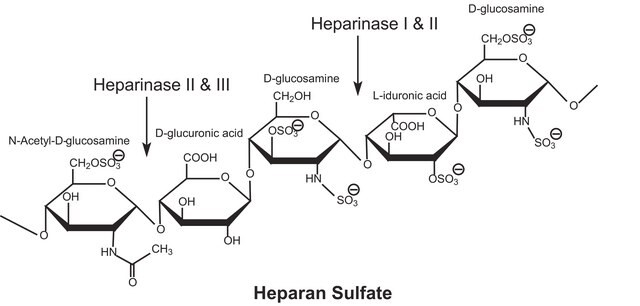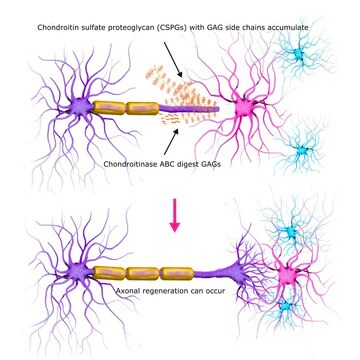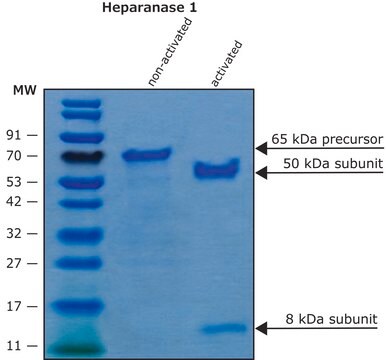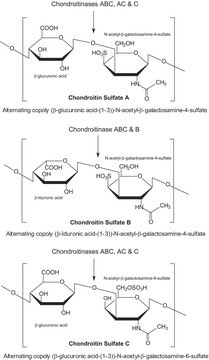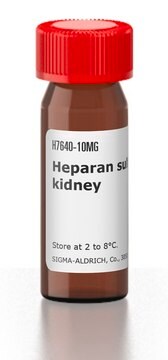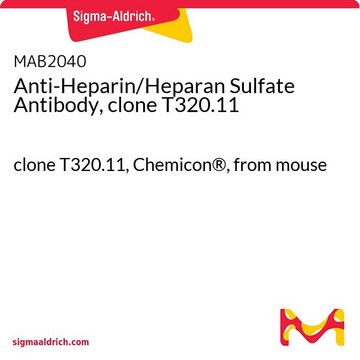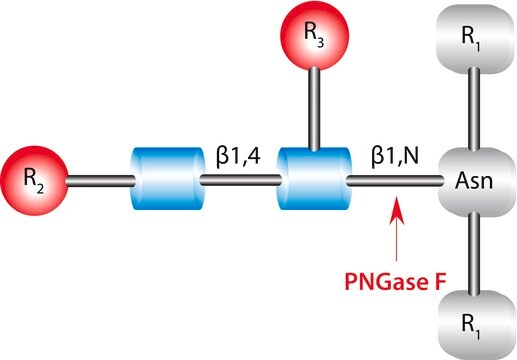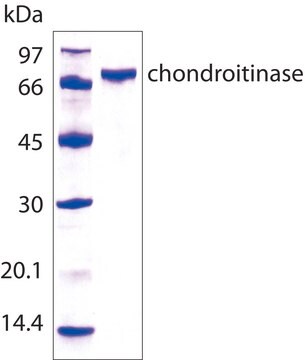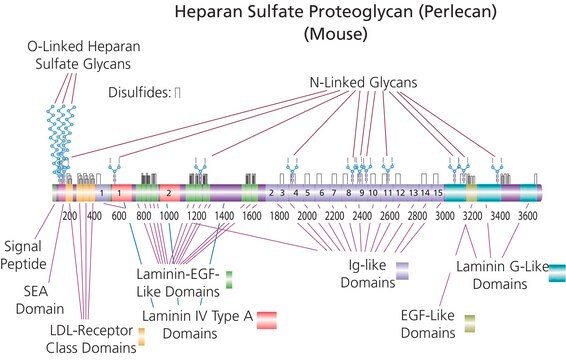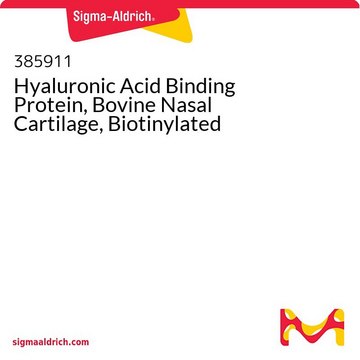Wichtige Dokumente
H3917
Heparinase I and III Blend from Flavobacterium heparinum
lyophilized powder, stabilized with ∼ 25% (w/w) bovine serum albumin, ≥200 unit/mg protein (enzyme + BSA)
Synonym(e):
Heparinase I and Heparinase III blend
About This Item
Empfohlene Produkte
Biologische Quelle
bacterial (Flavobacterium heparinum)
Qualitätsniveau
Konjugat
conjugate (Glucosaminoglycan)
Form
lyophilized powder
Spezifische Aktivität
≥200 units/mg protein
Konzentration
≥200 unit/mg protein (enzyme + BSA)
Versandbedingung
dry ice
Lagertemp.
−20°C
Allgemeine Beschreibung
Anwendung
- the digestion of heparan sulfate from ovine vitreous
- human embryonic kidney cells
- glycosaminoglycans from arterial tissues
- P0 retinae digestion
Biochem./physiol. Wirkung
Verpackung
Einheitendefinition
One unit will form 0.1 micromole of unsaturated uronic acid per hour at 7.5 at 25 degrees C using bovine kidney Heparan, Sulfate as substrate for heparinase III.
One unit will form 0.1 μmole of unsaturated uronic acid per hr at pH 7.5 at 25 °C. One International Unit (I.U.) is equivalent to approx. 600 Sigma units. Package sizes are sold in Sigma units.
Sonstige Hinweise
Lagerklassenschlüssel
13 - Non Combustible Solids
WGK
WGK 3
Flammpunkt (°F)
Not applicable
Flammpunkt (°C)
Not applicable
Analysenzertifikate (COA)
Suchen Sie nach Analysenzertifikate (COA), indem Sie die Lot-/Chargennummer des Produkts eingeben. Lot- und Chargennummern sind auf dem Produktetikett hinter den Wörtern ‘Lot’ oder ‘Batch’ (Lot oder Charge) zu finden.
Besitzen Sie dieses Produkt bereits?
In der Dokumentenbibliothek finden Sie die Dokumentation zu den Produkten, die Sie kürzlich erworben haben.
Kunden haben sich ebenfalls angesehen
Unser Team von Wissenschaftlern verfügt über Erfahrung in allen Forschungsbereichen einschließlich Life Science, Materialwissenschaften, chemischer Synthese, Chromatographie, Analytik und vielen mehr..
Setzen Sie sich mit dem technischen Dienst in Verbindung.